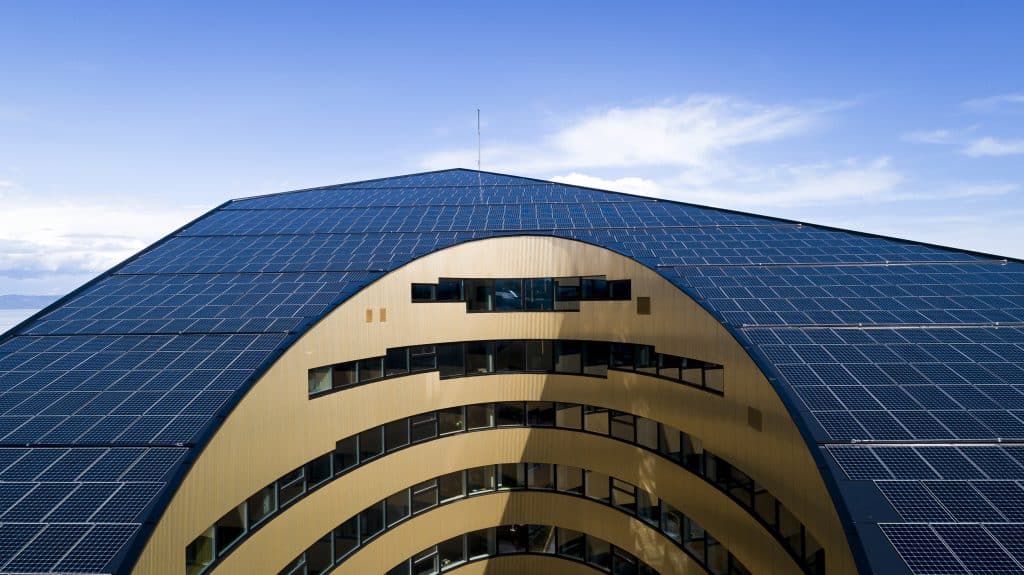
Stories
Bringing nature back to the city
Façades with incorporated plants are on the rise. But how does “green architecture” stay green? Is its maintenance economical? A discussion of the opportunities and challenges of green façades with Dr. Tobias Graf from Artificial Ecosystems.

From wildflowers on a roof to moss or shrubs on a façade: more and more clients and architects are opting for green architecture in the most literal sense. The challenge is in keeping the green alive and keeping costs for its maintenance as low as possible. Companies are therefore developing new approaches to façade greening.
Startup Artificial Ecosystems wants to expand the integration of plants into façades and the habitats of plants, while also using technology to support their growth. To achieve this, Artificial Ecosystems combines natural plant growth with artificial intelligence. The next step for the founders? Realizing a pilot project. FORMLINER spoke with Dr. Tobias Graf, CEO and one of the founders of Artificial Ecosystems, about the possibilities offered by green façades.
Interview partner
Dr. Tobias Graf is a biologist and plant ecologist. Graf founded Artificial Ecosystems in 2020 together with communication technician Björn Stichler, structural engineer Martin Hamp and business economist Alexander Pohl. The company is a startup of the Technical University of Kaiserslautern.

FORMLINER
Climate change can no longer be ignored. Modern architecture is looking for new, climate-friendly developments. Are green façades the right way to save the climate?
GRAF
We have to be sustainable in all areas of life. It’s good that humanity understands that it has a major impact on our global community. Architecture can be a role model by using new building materials. For example, we’re establishing our façade greening on recycled concrete. By using our BryoSYSTEM self-greening construction elements on vertical spaces, we want to bring positive aspects to the city.
FORMLINER
What can these self-greening construction elements do?
GRAF
The term is borrowed from Latin: the scientific name for moss is Bryophyta. These are façade panels in natural stone or concrete, or even recycled concrete, that independently form a moss layer. The process is pretty complex, as moss of course requires a suitable habitat and moisture. We provide the physical and chemical conditions in the façade panels so that moss can grow.
FORMLINER
Façades with plants have positive impacts in urban spaces: plants bind fine particles, produce oxygen and provide shade as well as evaporate water for a pleasant climate in their direct surroundings. What other impacts could green façades have?
GRAF
Greened façades reduce the amount of gray in our cities, keeping buildings warm in winter and cool in summer. Vertical greening also absorbs noise. Façades with incorporated plants generally have a positive impact on people.
FORMLINER
French botanist Patrick Blanc has gained international renown with his vertical gardens. Natural greenery as a vertical design element comes across as very unusual. What do you think about a building like the Quai Branly Museum in Paris?
GRAF
Patrick Blanc is the pioneer of façade greening. Begun as an art project, all planted façade initiatives today are building on his ideas.

FORMLINER
Central Europe is subject to distinct seasons, wherein trees and plants change dramatically. How can or must architects and façade planners react to this? What details should they pay particular attention to in planning a planted façade?
GRAF
Planners should work with experts from the beginning. Gardeners and plant ecologists should be integrated into the planning process as early as possible. These experts know what plants can grow at various sites and what kind of environmental needs they have. The southern façade – to name one example – is a challenge for any greening project as it has the most defined climatic extremes throughout the seasons.
Plants are biological “material”, that should never be forgotten: the material acts according to its own needs and doesn’t always grow how the architect wants. Tolerance on the part of planners and developers is important, also regarding the reactions of plants to drastic changes within the seasons. Incorporating plants on a façade is highly complex, and this should not be underestimated.
FORMLINER
You’ve developed a special planting system, consisting of a substrate element with controls and a water tank. You have also built countless sensors into your system to monitor moisture and other environmental parameters. You then evaluate this data. That sounds very complicated. What benefits does your system offer?
GRAF
By monitoring meteorological data, we or the clients are in a position to precisely establish actual environmental impacts and react to the plants’ needs very quickly. This collected data is necessary to care for the plants reliably and in the long term. Furthermore, this data can also be publicly integrated into smart city or smart home applications in the future. Alongside weather data, we can also present the environmental impact of the green wall itself – in a similar way to photovoltaic system performance displays. The quantified performance of plants can be presented on dashboards or monitors on the façade or in the building’s entrance area.
FORMLINER
What benefits do concrete elements offer as moss habitats?
GRAF
We not only work with concrete elements, but also natural stone. While the natural stone comes with certain limitations, concrete lets us install additional measures. For example, a “built-in” water retention system to provide the plants with water through dry periods.
FORMLINER
What are the limitations for green façades?
GRAF
The discipline of façade greening is still in development. Systems are not cheap, as they involve highly complex technology. In terms of construction, there are no limits in my eyes.

